The World Nomad Games: The Largest Olympics with No Sports You'd Recognize
No soccer, tennis, diving, or track & field can be found at the world's largest sporting event representing a quarter of a billion nomadic and semi-nomadic peoples.
📍 Astana, Kazakhstan
In a world dominated by sports like soccer, basketball, and gymnastics, where Olympic athletes train for years in state-of-the-art facilities, there’s a global event that celebrates a different kind of athlete—those whose skills are honed not in gyms, but in the great outdoors, while living lives deeply intertwined with nature. This is the World Nomad Games, a gathering that could be described as the Olympics for the rest of the world—the world of nomads.




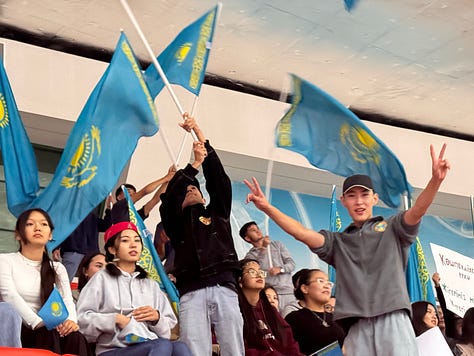

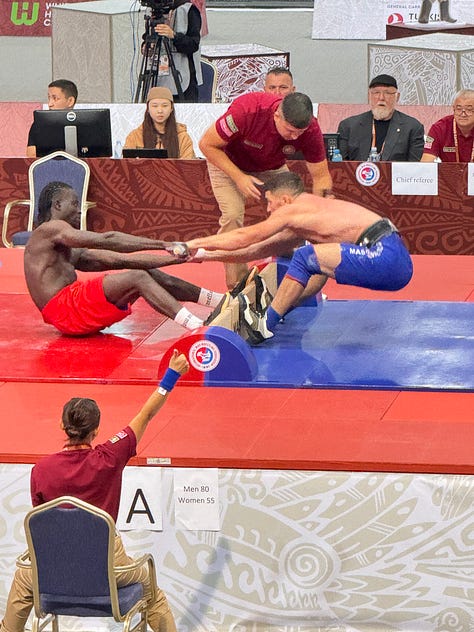


For the 240 million people who are either nomadic or semi-nomadic, the traditional Olympics don’t quite resonate. These are people for whom athletic talent is not something distinct from their daily lives, but rather an integral part of their survival and culture. In their world, sports like archery, horseback riding, and wrestling aren’t merely pastimes or diversions; they are skills with direct utility, honed over centuries of living close to the land. The World Nomad Games is the largest sporting event representing cultures with no permanent address.
Held every two years, the World Nomad Games bring together participants from over 100 countries, many of whom come from the regions with the highest percentage of nomadic populations. Here, in Central Asia, the cradle of nomadic culture, the agility, strength, and skill of nomads (and settled athletes who have learned their sports) find a global stage — honoring a way of life that the modern world is slowly forgetting.
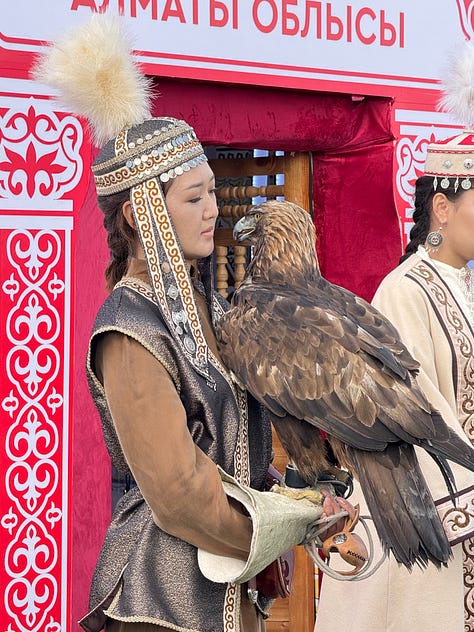
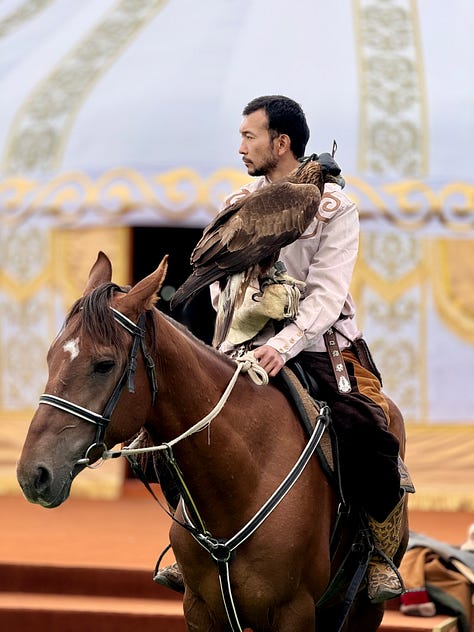
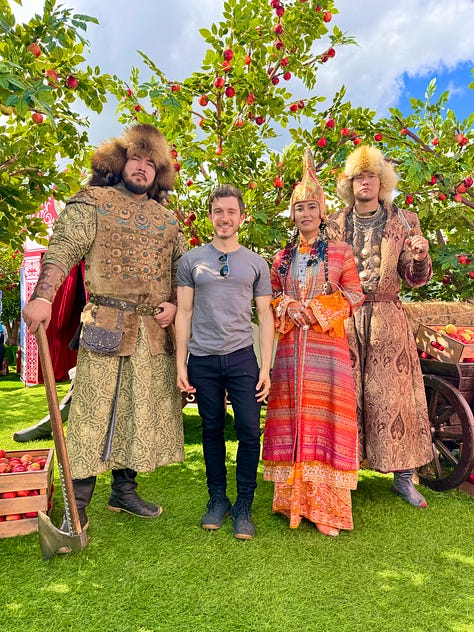

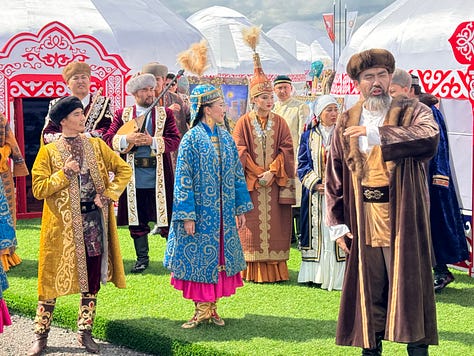
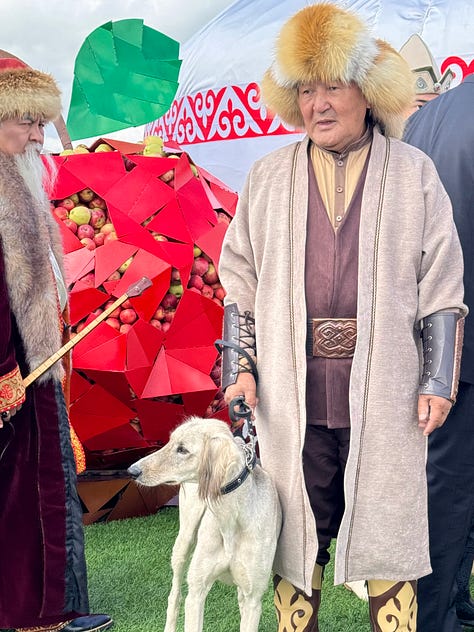


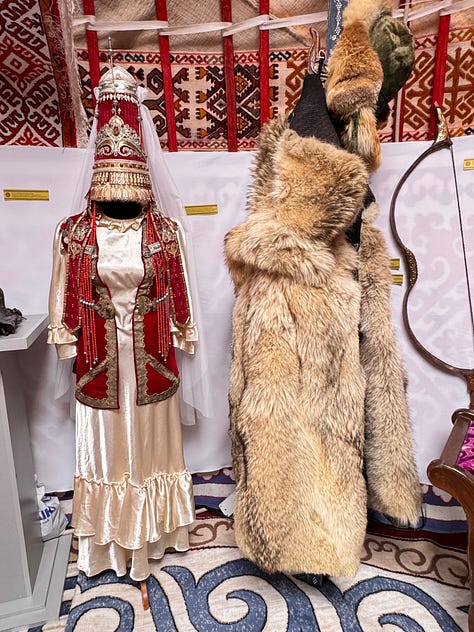
The term “nomad” conjures images of vast open spaces, herds of livestock, and people constantly on the move. And indeed, for some participants in the World Nomad Games, this is still a reality. These games celebrate athletic prowess passed down through generations of pastoral nomads, hunter-gatherers (once, before the agricultural revolution, the way all humans lived), and peripatetic artisans. The events themselves are capsules of their lifestyle: Kok-boru (or Buzkashi), for instance, is a horseback sport where teams compete to carry a goat carcass across a goal line. It’s often referred to as “dead goat polo,” but that term doesn’t do justice to the strength, horsemanship, and teamwork required to excel at this ancient game. Like nearly every sport at the Games, Kok-boru has a direct practical application: playing with the dead goat helps tenderize the meat before cooking.
In the match I watched, Kazakhstan won 16-0 against the Nomadic Cowboys from the United States. This decisive victory was hardly surprising, but the fact that a team of Americans, mostly Texans, could be found in this remote corner of the world honoring a largely forgotten culture defies expectations.
Kazakhstan annihilates the United States (“Nomadic Cowboys”) in kok-boru, or “dead goat polo”
Then there’s Er Enish, a form of wrestling that takes place on horseback. The riders grapple and twist, each trying to unseat the other while maintaining control of their own horse. It’s a sport that demands exceptional balance, raw strength, and an intimate understanding of horse behavior. For the uninitiated, it’s a thrilling spectacle; for the participants, it’s a reflection of their intimate command of and ties to the horses that are so central to nomadic life.
Er Enish, wrestling on horseback, in action
As I watched the Fifth World Nomad Games unfold in the Kazakh capital of Astana, I was struck by how different the event was from the Olympics the rest of the world watches. Yes, there were still million-dollar corporate sponsorships—after all, there is no higher-stakes event for nomadic sports, so much so that the presidents of Kazakhstan, Uzbekistan, and various other nations were in attendance. But the focus was clearly on the skills that have allowed these cultures to thrive for centuries.
Mas-wrestling, a strength sport where two athletes battle for a stick, featured both male and female athletes
The word “sport” seems inadequate to describe what I witnessed at the World Nomad Games. These events—ranging from Kok-boru (a ferocious contest where mounted horsemen vie for a goat carcass) and Er Enish (a brutal test of grappling on horseback) to Alysh (traditional belt wrestling), Mas-wrestling (a stick-pulling contest of strength and endurance), and Salbuurun (the ancient art of hunting with golden eagles)—felt more like distilled fragments of nomadic life, showcasing a near-telepathic connection between humans and animals.

The horse, arguably the most efficient and enduring mode of transport ever harnessed by humankind, transformed life on Earth. Nowhere is this more evident than on the steppe, the vast grasslands of Central Asia, where the horse enabled the nomadic pastoralist way of life. Consider mounted archery, a sport demanding extraordinary equestrian skill and marksmanship. The rider, galloping at full speed, must shoot arrows at targets with precision—a practice once essential for both hunting and warfare. To witness a competitor in full traditional attire, bow drawn, arrow released in a fluid motion honed by generations, is to feel the weight of history in every gesture. The synergy between horse and rider, the intense concentration, the unwavering accuracy—these are not mere athletic feats; they are testaments to a way of life lived in exquisite harmony with nature.
These archers make it look easy! Watch them hit targets while riding at full gallop.
The highlight of the World Nomad Games was the opening ceremony—a spectacle that spared no opportunity to wow, blending ancient traditions with modern theatrics. The extravaganza began with a flag procession, with Kyrgyzstan parading first, as they originated the Games a decade prior—similar to how Greece leads the opening ceremony of the Olympics. Athletes from Antigua & Barbuda to Zimbabwe proudly marched, with especially large contingents from countries I expected—Kyrgyzstan, Kazakhstan, Mongolia (the country with the highest percentage of its population still living nomadic lifestyles today), Uzbekistan (the only country in Central Asia without a significant nomadic history), and Russia (the region’s behemoth). Then came choreographed dances and cultural demonstrations, coordinated across what must have been hundreds of performers clad in elaborate costumes (most notably “golden men”, the symbol of Kazakhstan), navigating the stage with pinpoint precision and moving to rhythms that throb with a deep connection to the land.
The World Nomad Games kicked off with a vibrant opening ceremony that showcased the rich cultural heritage of nomadic peoples and nearly rivaled the production value of the Olympics. With the presidents of several participating nations in attendance, it was clear these Games hold immense cultural importance for the participating nations.
I felt a strong sense of pride, and ironically, nationalism (the idea of a nation-state with fixed borders clashes with the fluid nature of nomadic identity), not just in the athletes, but in the spectators, too. For the nomadic communities represented here, the World Nomad Games are more than just a competition—they’re a celebration of a way of life that is often overlooked in a world that increasingly values stability and settlement over movement and change. Here, I witnessed a celebration of the hunter-gatherer roots of our species, from which most of us have moved on.
The history of the World Nomad Games is relatively short, but runs deep with the desire to preserve the traditions of nomadic cultures in the face of globalization. The first games were held in 2014, the brainchild of former Kyrgyz President Almazbek Atambayev, who envisioned an event that would bring together the diverse cultures of Central Asia and beyond. Held on the shores of the shimmering Issyk-Kul Lake in Kyrgyzstan, the games were an immediate success, attracting athletes from 19 countries and showcasing ten different ethnosports. Since then, the games have grown exponentially. By the third edition in 2018, over 2,000 athletes from 80 countries were participating, with new sports and cultural activities being added to what is now a full-fledged platform for cultural exchange.
History, with its predilection for monuments and capitals, often overlooks those who tread lightly upon the earth, leaving behind not grand edifices but the faintest of traces. Long before the Silk Road emerged, some 5,000 years ago, nomads traversed the steppe, their herds their compass, their horses their wings. They were the threads connecting East and West, mountain and desert, the burgeoning civilizations of China and Europe.
All of humanity once lived nomadically, bound only by the natural barriers of forest, river, mountain, and desert. The World Nomad Games, however, unfold in a world starkly different—a world fragmented by borders, highways, and the confinements of nation-states.
Yet, at the Fifth World Nomad Games, I found myself immersed in a way of life still deeply intertwined with the land, the animals, and the rhythms of nature. For the nomads, athleticism is not a separate pursuit but an intrinsic expression of their being. In a world increasingly detached from such primal connections, the Games serve as a reminder of the profound harmony that can exist between humans and the world around them.


